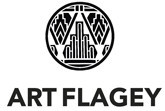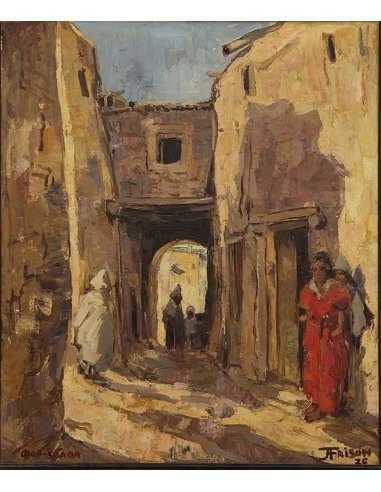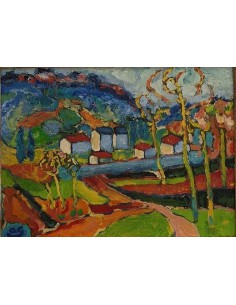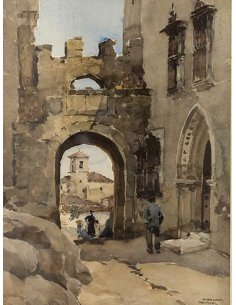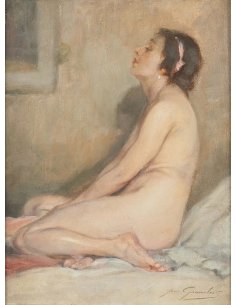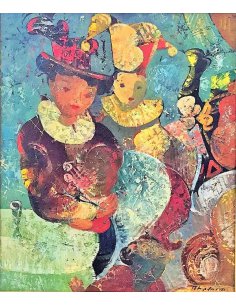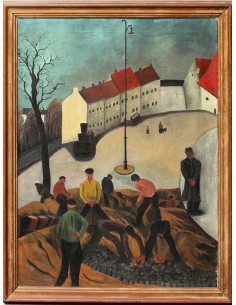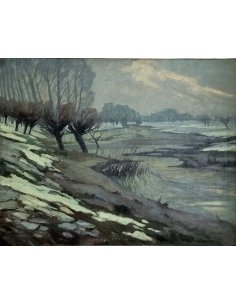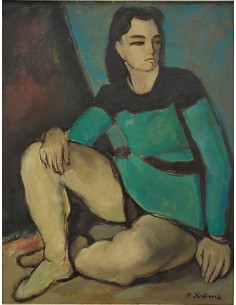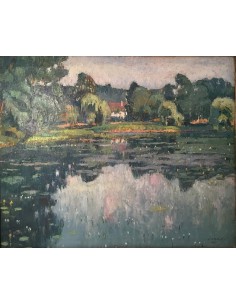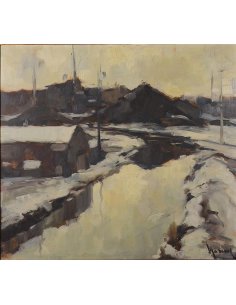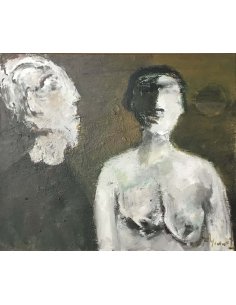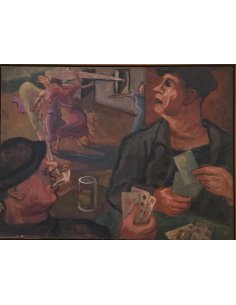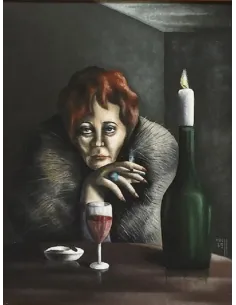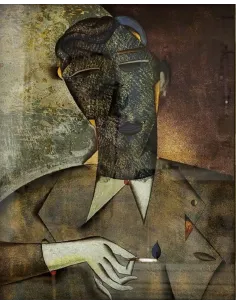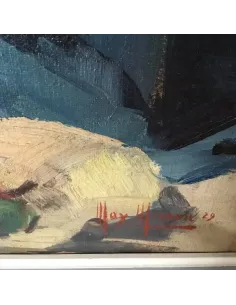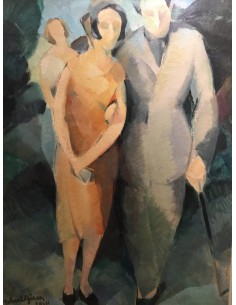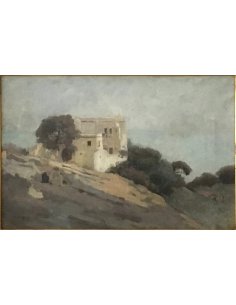Post-impressionist painting "Bou-Saâda" by Belgian painter Jehan Frison.
Jean Frison's paintings demonstrate a strong preference for oriental scenes. This colorful work from 1926, inspired by southern Algeria, depicts a narrow alley in the Algerian town of Bou-Saâda, rendered with bold brushstrokes in warm earth tones. A narrow path runs through the center, leading into a dark archway. Behind it, the view opens up to a brighter area with backlit figures—presumably locals in traditional clothing. On the left, a figure dressed in white slowly walks along the wall of a house. On the right, two women stand, one in a bright red robe, which adds a powerful color accent to the image. The buildings appear raw, almost sketchy, with a rich palette of ochre, brown, terracotta, and scattered blue in the sky. Frison's impressionistic-expressionist technique conveys the movement, heat, and atmosphere of the North African scenery.
The painting's frame is a classic, elaborately decorated stucco frame with a gold finish, typical of the first half of the 20th century. The floral ornaments and profiled design lend the painting a museum-worthy character and underscore its historical value. The contrast with Frison's rough, earthy painting style creates a charming dialogue between the work and its presentation: the frame brings out the depth of color in the painting without overpowering it.
About the artist:
Jehan Frison (1882 - 1961) - Painter between Belgian modernism and North African inspiration
Jehan Frison was born in Brussels in 1882 and is considered one of the most fascinating figures in early 20th-century Belgian art. His work combines elements of Symbolism, Post-Impressionism, and early Expressionism, driven by a sensitive observation of people and their surroundings.
Frison studied at the Académie royale des Beaux-Arts de Bruxelles from 1896 to 1902 under Auguste Oleffe and developed a distinctive style that combines light, atmosphere, and emotional depth.
In addition to scenes from everyday Belgian life, he devoted himself particularly intensively to landscape painting – influenced by numerous trips to North Africa, especially Algeria and Morocco. There he discovered new forms of expression for light, color, and composition. The impressions he gained there – desert landscapes, oriental architecture, and the intense light – profoundly influenced many of his works.
Frison was an active member of the Belgian art scene and exhibited regularly in Brussels and other cities. His retreat in Linkebeek, where he lived until his death in 1961, became the center of his artistic work.
Today, Jehan Frison's work is experiencing renewed appreciation. His painting combines Belgian painting tradition with a cosmopolitan openness – an artistic testament to encounter, movement, and stillness.
Museums: Charlier Museum in Sint-Joost-ten-Node, Museum of Ixelles/Brussels, Royal Museum of Fine Arts in Brussels.
